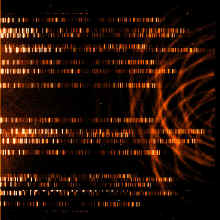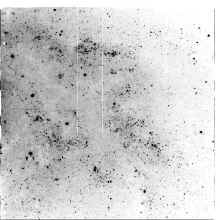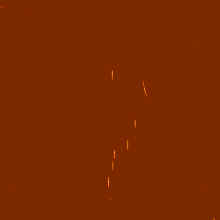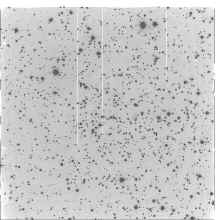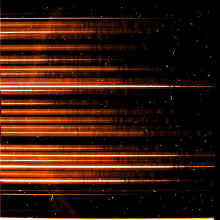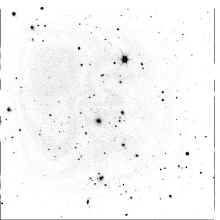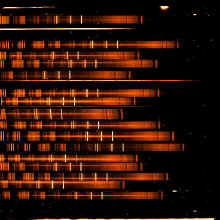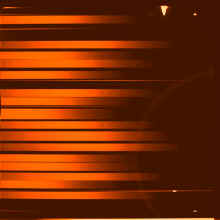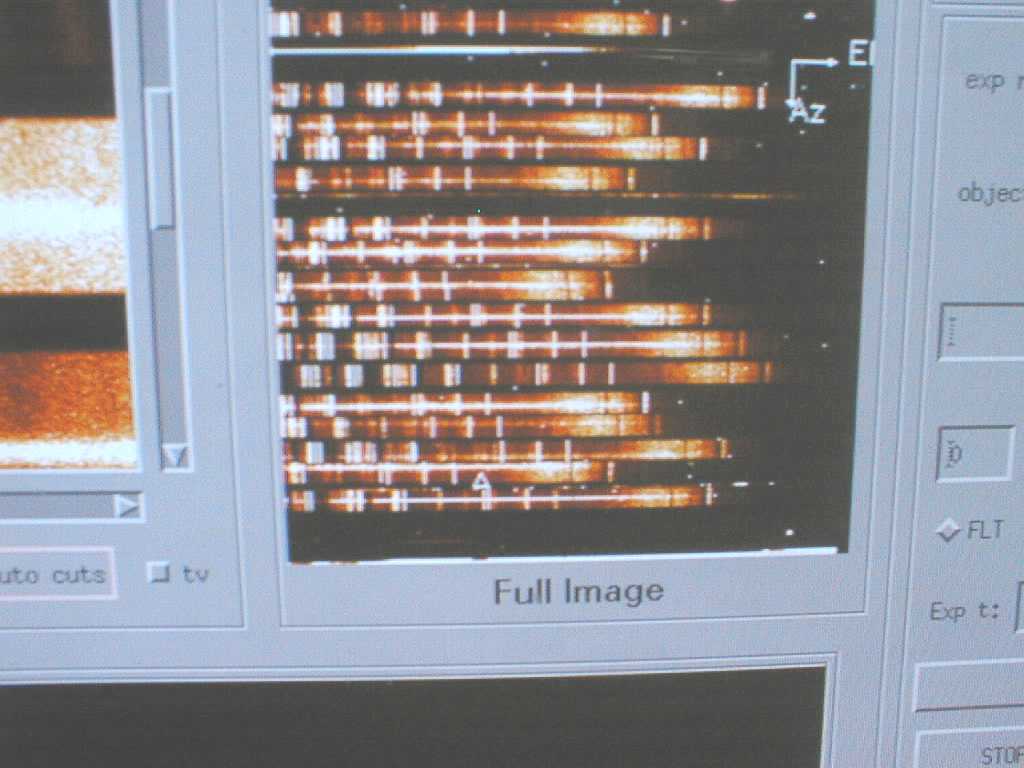
Our first commissioning target was a subsample of the globular clusters recently discovered in M33 by Chandar, Bianchi & Ford (1999) using HST. Spectroscopy of extragalactic clusters is intended to provide information on their ages and metallicities, and ultimately on their formation mechanism.
The pointing of the slits, as well as their quality, was excellent. Only two steps were generally required to put all the targets within the slits. The pointing was made faster by two reference pinholes corresponding to 2 relatively bright stars in the field. An inclined slitlet was employed to observe two objects close to each other.
The first light of MOS@TNG ! This is a 20 min spectrum of clusters in M33 observed through thin cirrus using 1.2" slitlets. The grism was the MR-B (#2). Spectra taken with moderately tilted slits will be easily reduced using the long-slit tasks of any reduction package.
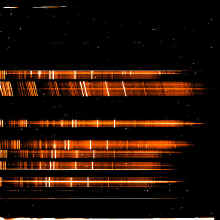
The second target was a stellar sample in the open cluster Be17 (suggested by Tosi, Bragaglia and coll.). Multiobject spectroscopy will provide in this case membership information, so as individual stars will be securely placed in the HR diagram.
A 30 min exposure gave high S/N spectra for 21 stars in the field. We used the "high resolution" B grism (#5) yielding a 4 A resolution with 1.2" slitlets.
Galaxy clusters represent the most classical target for multiobject spectroscopy. We tested the behavior of MOS@TNG by observing Abell 951 (z=0.14), a nearby cluster for which the redshift distribution is not known (suggested by G. Fasano and coll.). Observations of more distant clusters were prevented by the bad wheather.
Good spectra of galaxies in A951 were obtained just with a 20 min exposure, before thick cirrus forced us to stop observations. The grism was the LR-B, giving a 13 A resolution with 1.2" slitlets.
The dome flat fields taken with the same mask shows the excellent quality of the slits. It is important that the masks are carefully dust-cleaned just before installation at the spectrograph.
An example of comparison lamp spectra taken with the Th lamp and the LR-B grism. The arcs on the rigth side are ghosts due to the grisms, and are currently under investigation by the DoLoRes team.
